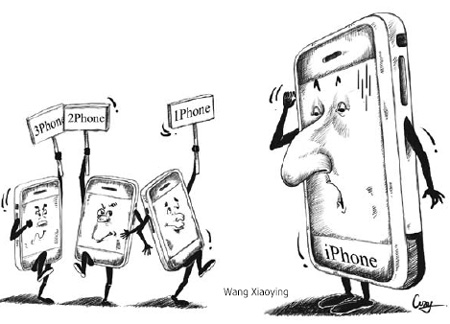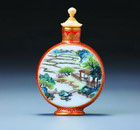Opinion
Brand culture in China should start with managers
By Mike Bastin (China Daily)
Updated: 2010-02-25 14:23
 |
Large Medium Small |

As China and Chinese companies continue to develop and compete in the global market place, surely it is about time we start to see the emergence of global Chinese brands?
Having taught brand management in China for more than 10 years, I continue to gain a real insight into the issues surrounding this most important aspect of modern business. First, let's remove any confusion about the definition of a "brand" and what distinguishes a "product" from a "brand":
A product is defined as a functional proposition with tangible features, for example, a digital camera or a mobile phone with camera and Internet access, a car with four-wheel drive and air conditioning. A brand combines this functional proposition with an emotional consumer experience, for example, Nokia "brings people together" and BMW represents "status", "success" and "power".
There are several branding myths. One is that branding requires heavy advertising: many successful brands, such as Starbucks, do not advertise. Another is that a brand must have a Western image. However, Tsingtao beer, one of China's most successful international brands, not only carries the name of a distinguished Chinese city but also uses Chinese history as a key part of its branding with pictures of the Great Wall and Confucius on its website. Many believe global branding requires a standardized brand but this is not the case. Kentucky Fried Chicken incorporates more and more very Chinese food offerings.
It's also not true that branding only applies to large companies: small companies, especially hi-tech ones, are increasingly developing successful brands. Globalization and technological advances will create more and more opportunities for small companies to develop and maintain successful brands. In particular, smaller companies are usually more capable of the increasing flexibility required to adapt the brand. Another myth is that branding only applies to visible, consumer products, such as cars, clothes and shoes. This "emotional experience" that distinguishes a "product" from a "brand" also applies just as much to other product categories including business-to-business products. However the meaning is different. For example, Intel commands consumer "trust" and "respect", which define its "emotional experience".
Consumers, especially Chinese consumers, are increasingly brand-focused. Research shows that consumers select only a few brands from which to choose within a product category rather than consider product features first. Some of my recent research with Chinese mobile phone consumers reveals clearly that they do not identify first the most desirable mobile phone features, such as Internet access, speed and camera, and then consider brand alternatives. Instead, Chinese consumers ring-fence only those brands considered acceptable, such as Nokia, Samsung, and then begin their decision making focusing only on these acceptable brands.
Successful brands create greater customer loyalty and as a result, higher profit. This is even more apparent during an economic downturn, when consumers continue to purchase the brands they really value and trust.
All successful brands first develop and maintain the highest product quality standards. For example, BMW has become an extremely powerful, fashionable brand. However, this has only been achieved as a result of consistently high levels of product quality, the foundation of all successful brands. Advertising and other marketing promotions will never build a brand without consumer trust in product quality.









